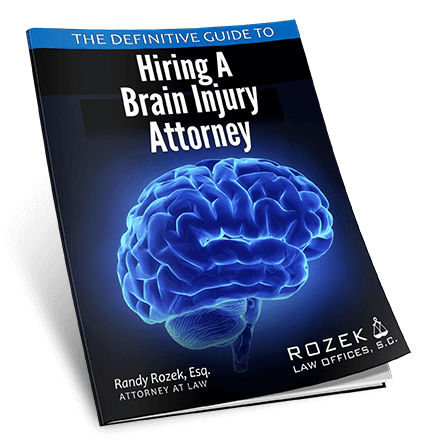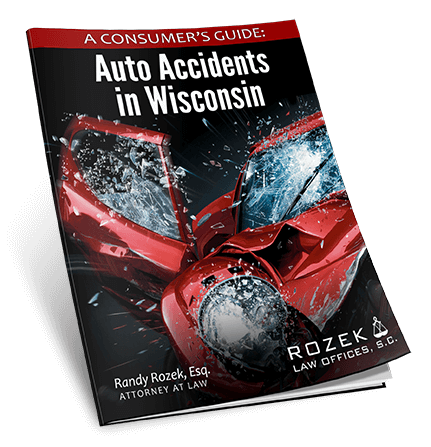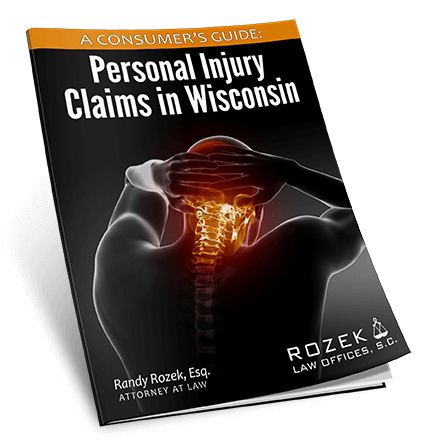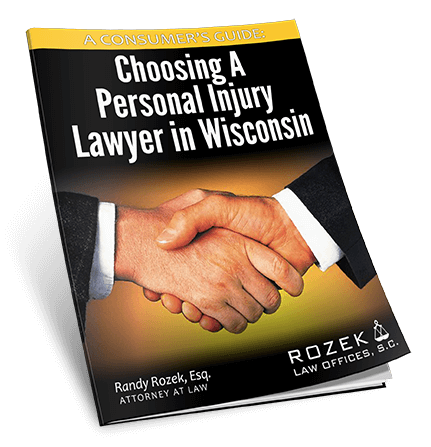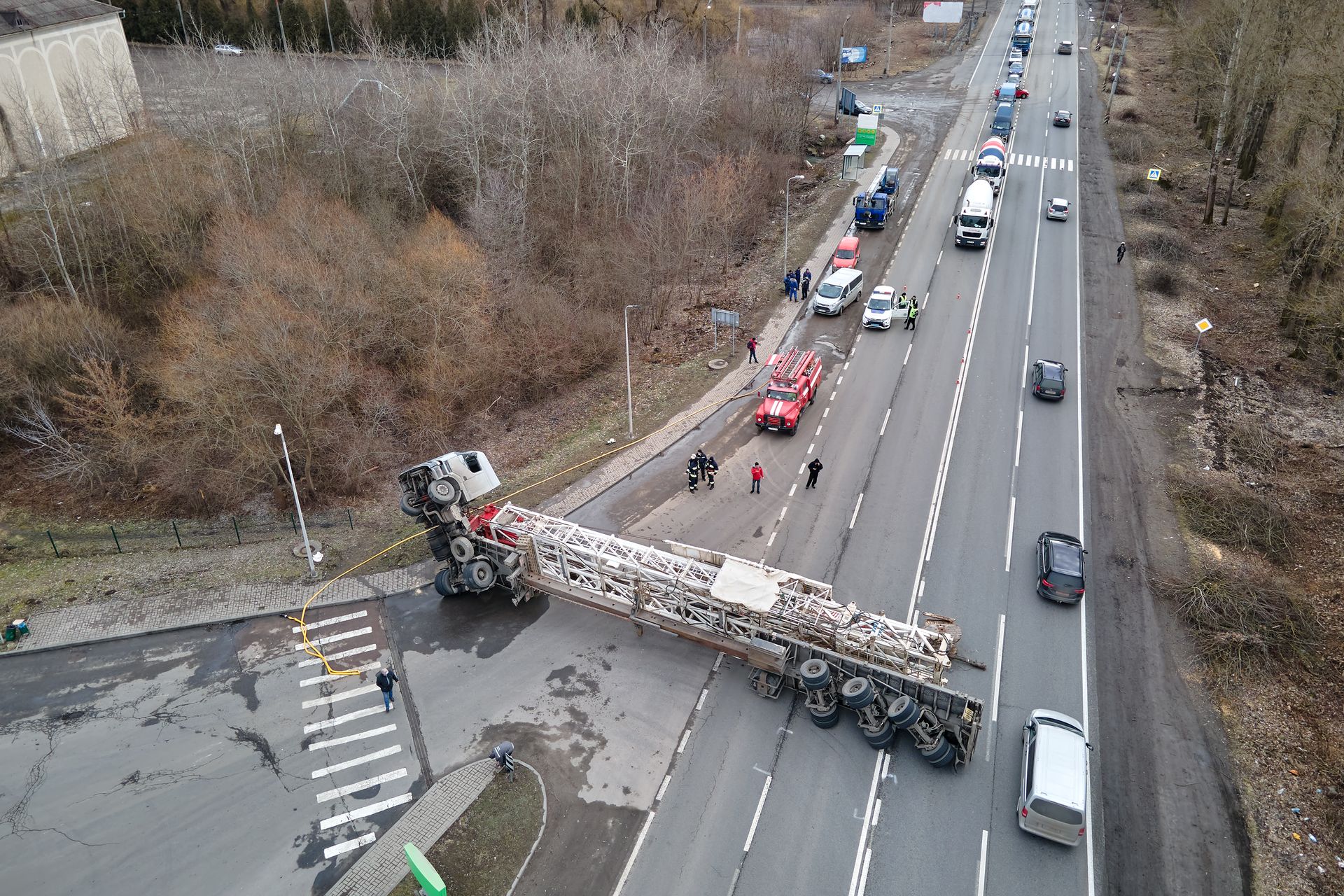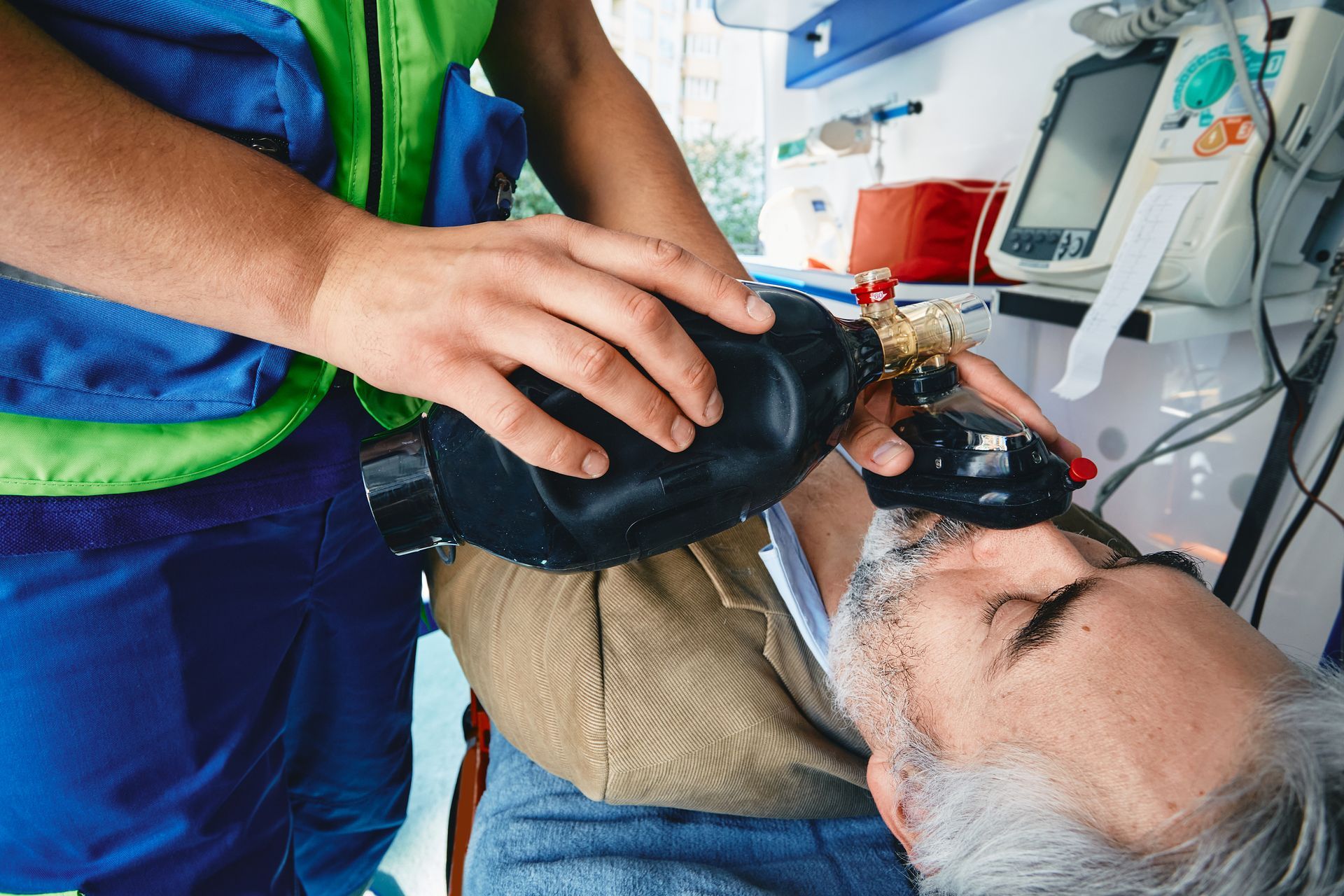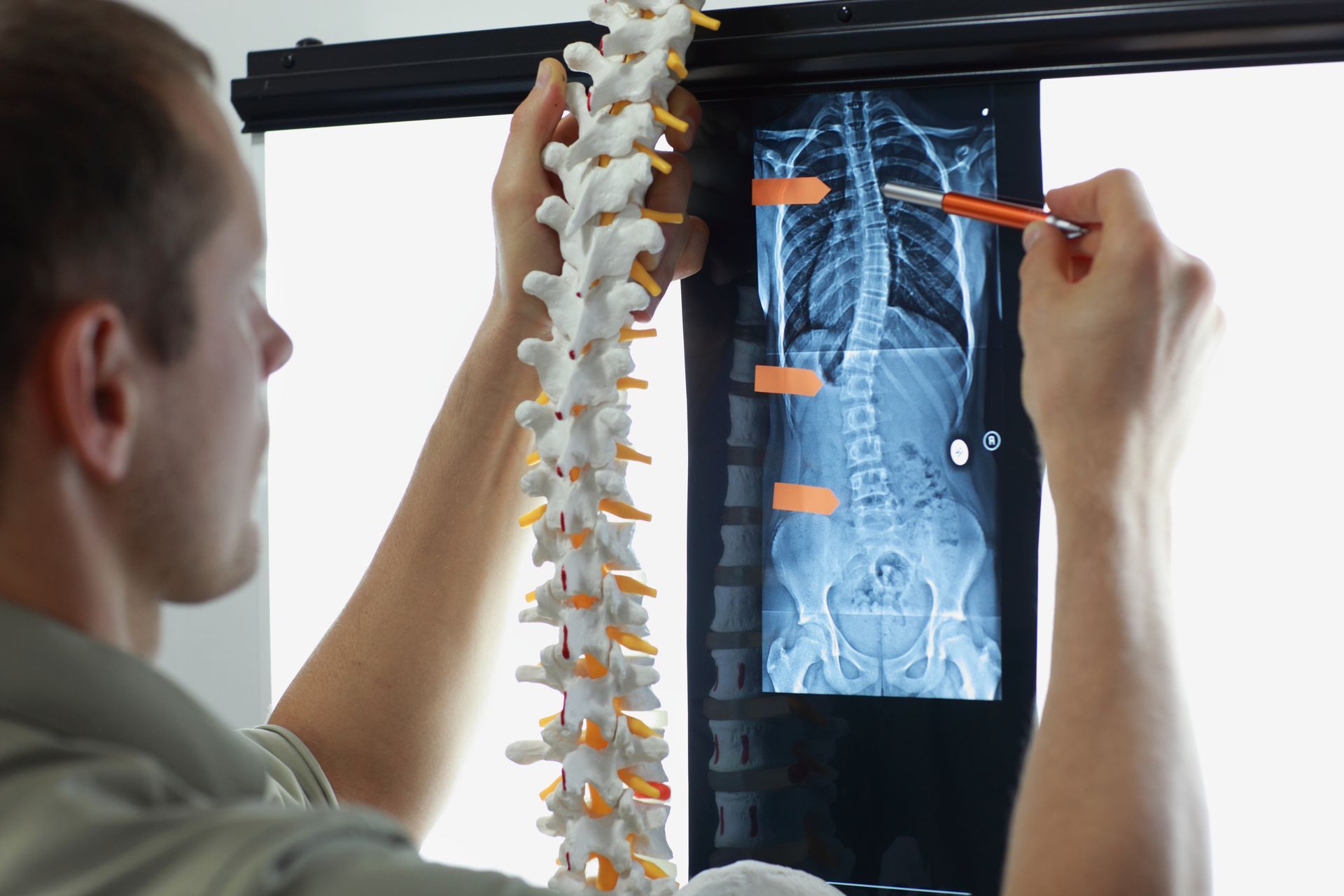Slip and Fall Lawyer
in Wisconsin
in Wisconsin

Wisconsin Slip and Fall Attorney
Wisconsin Brain Injury Attorney Randy Rozek
explains the specific set of state laws that impact dangerous property cases.
While we have offices in Milwaukee and Madison, we handle slip and fall cases that happen throughout Wisconsin.
Slip and all property injury accidents, also referred to as “Wisconsin Slip and Fall Accidents,” “Wisconsin Trip and Fall Accidents,” and “Wisconsin Premises Liability Accidents,” usually result in minor cuts and scrapes. When people hear the phrase “slip and fall,” they often picture a person slipping on an banana peel. However, thousands of slip and fall injuries occur each year as a result of accidents due to dangerous premises.
These slip and fall injuries can occur due to a variety of reasons that make property unsafe, including but not limited to the following: unsafe flooring, such as improperly secured floor mats, unlevel flooring surfaces, ice or snow buildup, or cracked steps or floors; weakened floor boards; improperly maintained premises; inadequate security; inadequate warning signs; falling objects such as ice, facade, or construction tools; inadequate slip resistance surfaces, especially in areas known to be slippery such as entrances, bathrooms, or bathtubs; or foreign substances left on floor for an unreasonable amount of time.
Wisconsin creates a legal distinction between privately owned property
and public property. Private property owners owe a duty of reasonable care to invitees. Public property owners, and maintenance companies, owe a much higher duty to people on their property. Most Wisconsin accidents on public property are governed by Wisconsin’s Safe Place Law.
When choosing a lawyer, it is critical that you hire an experienced Wisconsin Slip and Fall Lawyer. You should be comfortable with your lawyer’s experience handling Wisconsin Slip and Fall Personal Injury Cases. in which you have been involved. Contact an Experienced Wisconsin Slip and Fall Lawyer.
Duty of Private Property Owners in Wisconsin
Wisconsin private property owners owe different duties to trespassers as opposed to non-trespassers. In Wisconsin a trespasser is defined as someone who goes onto someone’s private property without consent or an invitation. This consent or invitation can be express or implied. An express invitation is just that, a specific invitation, while an implied invitation is one that can be assumed based upon past conduct and acts.
A. Wisconsin Landowner’s Duty to Trespasser
If an individual is considered to be a trespasser, then the Wisconsin private property owner cannot willfully, wantonly, or recklessly inflict injury upon the trespasser. If the owner knew or should have known of the trespasser’s presence on the property, then the owner cannot do anything likely to cause injury to the trespasser. A Wisconsin private property owner is is guilty of having willfully, wantonly, or recklessly inflicted injury upon a trespasser if the owner intentionally does something or fails to do something knowing or having reason to know of facts which would lead a reasonable person to realize that such conduct by the owner not only created an unreasonable risk of bodily harm to the person trespassing but also involved a high degree of probability that substantial harm would result to the trespasser. Basically, the owner cannot intentionally injure the trespasser.
B. Wisconsin Landowner’s Duty to Non-Trespasser
The duty upon a Wisconsin private property owner is quite different to non-trespassers. The owner must must use ordinary care
under the circumstances to construct, manage and maintain the premises to avoid exposing non-trespassers to an unreasonable risk of harm. Ordinary care
is the degree of care which most Wisconsin private property owners would use under similar circumstances. A private property owner fails to use ordinary care
when they do something or fail to do something that a person of ordinary intelligence and prudence would do under the circumstances. This also requires the owner of the property discover conditions on their property that would likely expose a non-trespasser to an unreasonable risk of harm. If an unreasonable risk of harm existed and the owner knew of it or should have known of it, then the owner has a duty to either fix the problem or warn of the danger.
Duty of Public Property Owners in Wisconsin
The majority of Wisconsin slip and fall injuries on public property involve Wisconsin’s Safe Place Law, which applies to public buildings and places of employment.
A. Wisconsin Safe Place Law
Wisconsin Safe Place Law simply refers to a set of Wisconsin Statutes drafted by the legislature that requires certain public property owners and employers. The owner or employer is required to keep their premises as safe as the nature of their business reasonably permits. This requirement includes the construction, maintenance and repair of the premises. As with private property, trespassers are not covered by the Wisconsin Safe Place Law. Business and employers are not required to keep their property absolutely safe, but the must keep the property as free from danger to the life, health, safety, or welfare of visitors or employees as the nature of the property will reasonably permit. This requires the owner or employer to use reasonable care in inspecting the property for problems.
Wisconsin Safe place violations by building owners can be separated into to types: structural defects and defects associated with the structure. A structural defect is an unsafe condition on property that has been “built-in” in the sense that structural defects include improper building materials, improperly designed buildings or even an improperly laid out building. Steps that do not have appropriate traction or the lack of a handrail on a stairway where one is required would be examples of structural defects. A defect associated with the structure means an unsafe condition due to disrepair or lack of adequate maintenance.
As a practical matter, the biggest distinction between structural defects and defects associated with the structure is that injured persons are not required to prove that the owner of the property was aware, or should have been aware, of the structural defect.
B. Negligence Claims Against Public Property Owners in Wisconsin
Wisconsin injury victims can also purse claims against public property owners in Wisconsin under a general negligence theory. As with all negligence claims, the plaintiff is required to show the following:
- Duty – The owner had a general duty to keep their premises safe.
- Breach – The Owner breached their duty to keep their premises safe.
- Proximate Cause – The plaintiff was injured due to the owner’s breach of their duty.
- Damages – The plaintiff was injured due to the owner’s breach of their duty.
In 2004, the Wisconsin Supreme Court, in Megal v. Green Bay Area Visitor & Convention Bureau, Inc., 2004 WI 98 (2004), abrogated their 40 year old decision in Lealiou v. Quatsoe, 15 Wis. 2d 128, 136 (1961), and ruled that the failure of a party to establish a Safe Place violation does not necessarily mean they cannot survive on a negligence theory. This means that fewer premises liability cases will be dismissed by the trial judge at summary judgment and more cases will go the jury. This was a great victory for Wisconsin injury victims.
Lawyers rely upon a variety of sources to establish a Duty on the part of a Wisconsin public property owner. The following sources are the common sources:
- Wisconsin Statutes – many requirements are listed directly in the Statutes
- Wisconsin Administrative Code – many duties and obligations are set out in the Administrative Code
- Local Ordinances – many local ordinances are now available online, be sure to check with the specific municipality
- American Society for Testing and Materials (ASTM) International Guidelines
– these guidelines are very helpful in identifying the duties and obligations of public property owners. There are guidelines that require specific slip resistance surfaces on certain areas, as well as limiting the amount of slopes and height limitations for steps. One of the most commonly used general guidelines is the following:
- ASTM Guidelines F 1637-02 5.1.3 Walkway Surfaces – requires that walkway surfaces be “slip resistant under expected environmental conditions and use.”
Note: Recently the Supreme Court ruled against Wisconsin injury victims, in Mair v. Trollhaugen Ski Resort, 2006 WI 61, where the Wisconsin Supreme Court ruled that Wisconsin injury victims have no recourse if they are injured due to a structural defect and the property is more than 10 years old. This is significant because public property owners no longer have a duty to correct structural defects on their property if it is over 10 years old. This will substantially change the approach many Wisconsin personal injury lawyers take in proving liability on the part of Wisconsin public property owners. If you or a family member have been injured as the result of a slip and fall accident in Wisconsin, be sure to contact an experienced Wisconsin dangerous premises lawyer
for you or your family member’s case.


